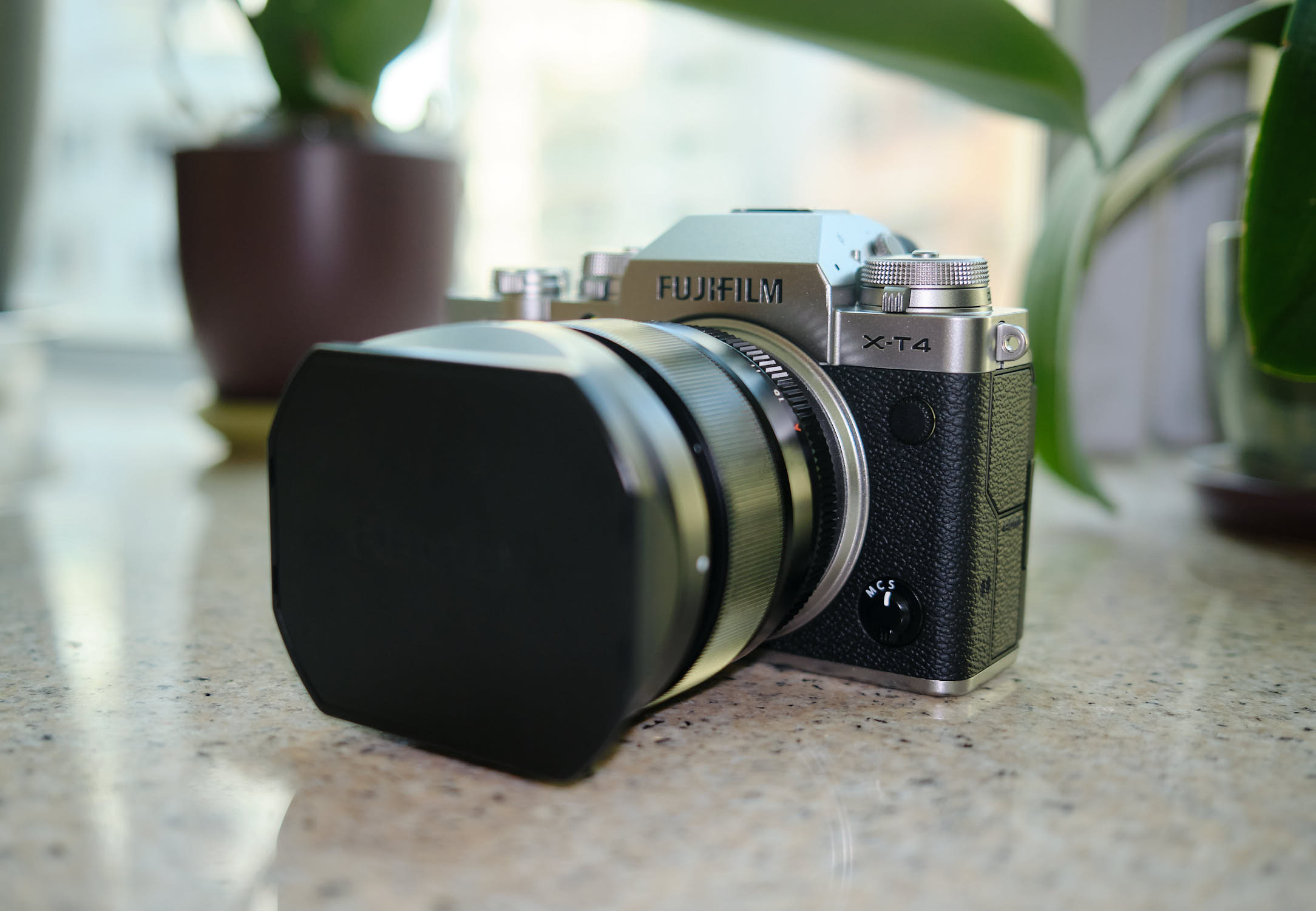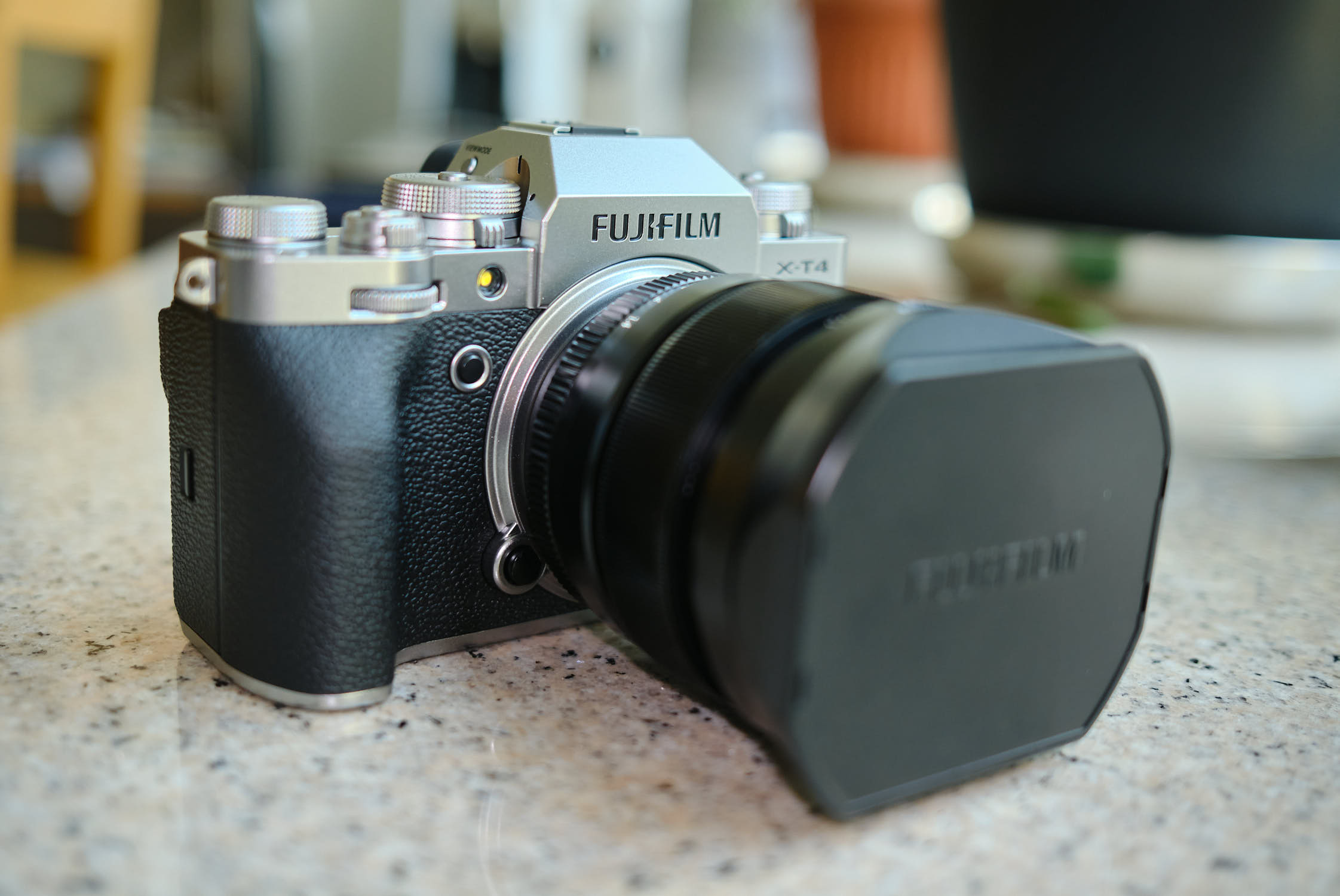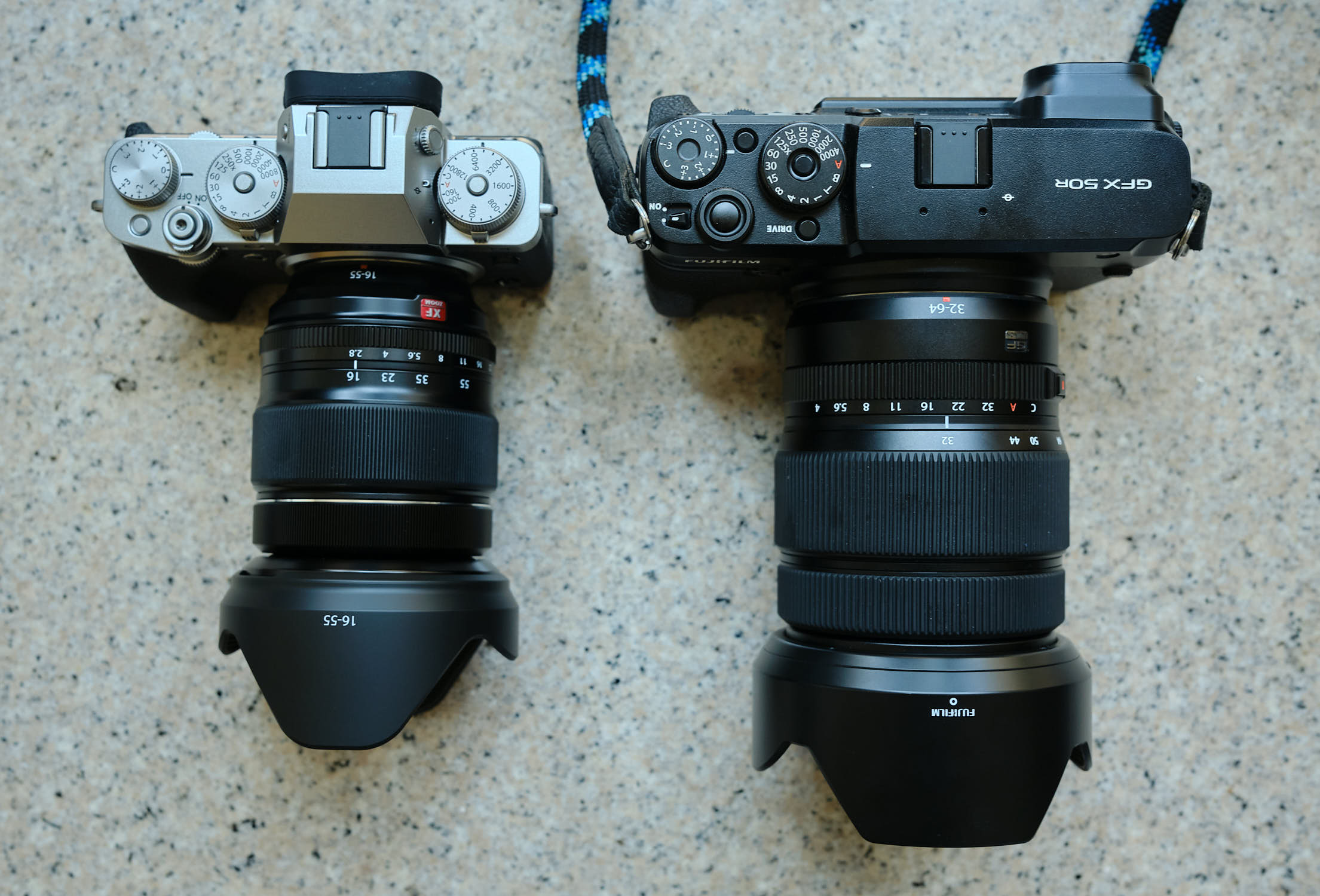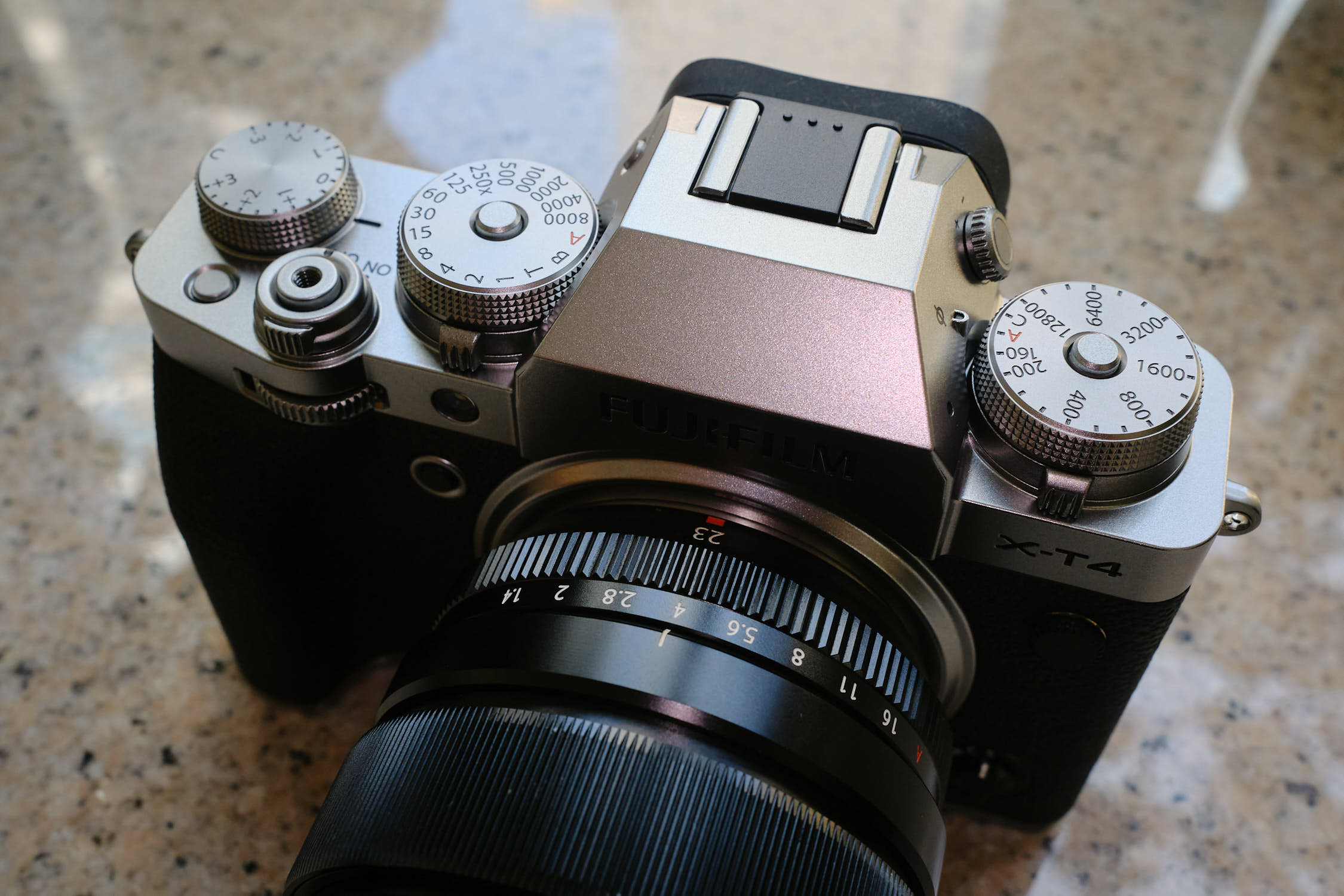
The Fujifilm X-T4 has arrived and I just got mine yesterday. Giving away the punchline is always a bad strategy in a blog post because it’s unlikely that the reader will continue to finish through the text, but in this case, I cannot resist. The X-T4 is the perfect camera. If you’re on the fence about getting one, get off that fence and order one soon because there are going to be thousands of these amazing cameras sold in the coming months. I think the X-T4 is going to be an even bigger success than the X-T2 and X-T3 and those have already gained legendary status.
This post won’t be a full review (that will come later once I’ve had more time with the camera and can conduct a number of tests, especially with the IBIS performance), but I thought I’d share my initial thoughts, coming from a past X-T2, X-Pro2, M10 and GFX 50R owner.
Weight
The weight feels the same as the X-T2 and is neither heavy or light. It feels just right in the hand and when strapped across the shoulder. It doesn’t feel so light that it feels cheap and it doesn’t feel so heavy that it becomes a burden. Fujifilm balanced features like extended battery performance and IBIS versus weight perfectly.
Build Quality
Just like my recently acquired X100V (I got that little camera to see what the fuss was about, expecting to quickly re-sell it given the high demand, but I’ve now become a convert and understand why this camera carries a mythical status amongst photography professionals), the X-T4 has improved build quality over its predecessor with finer finishing and a more mature appearance to the silver finish. More and more, the Fujifilm cameras are looking like what Leica should be churning out for their APSC offering.

Image Quality
With so many 26MP X-Trans sensor cameras already out in the wild, the image quality of this sensor is well known and remains top-tier in the APSC category. There’s nothing to complain about with great dynamic range, excellent resolution (especially with Fujifilm’s amazing lenses), low noise, nice looking grain, and of course, Fujifilm’s legendary in-camera film simulations.
With the added benefit of IBIS, the chances of getting a shake-free image at low shutter speeds increases dramatically. This one technology changes everything in certain specific circumstances. In situations where the subject is not moving quickly, having IBIS enables you to lower your shutter speed, which gives you more freedom to lower the noise from less ISO amplification, or increase the depth of field through a smaller aperture, or a combination of both.
Video Quality
I haven’t put too much time into the video capabilities, but thus far, the combination of 4k, high bit-rate, and IBIS seems to produce beautiful video. The video capabilities on this camera are far beyond my own and I’m going to be spending lots of time learning about video in the coming months and years. The goal is to capture moving images of my loved ones and beloved Arya so that I have those memories forever.
The initial videos that I’ve taken with IBIS demonstrate exactly why I wanted this camera. It’s smooth and easy to use and more than sufficient for video of my family members and Arya. I already have the GFX50R and X100V, but the X-T4 will fill this gap in capability perfectly.
Size
The extra size over the X-T2 is negligible and again, Fujifilm has perfectly balanced the increased size to match the features people wanted in the larger battery and IBIS. Unless you had the X-T2 right next to the new camera, you wouldn’t know that it has increased at all, with perhaps the exception of the grip, which is clearly more prominent.

Controls
Fujifilm continues to dominate the market with their intuitive controls. Hand an X-T4 to a novice and they’ll figure out how to change the exposure triangle pretty quickly. Do the same with a modern DSLR or a Sony A series camera and you’ll soon see tears of frustration and a lurch for their mobile phone camera.
Fujifilm goes it even one better this time with the super intuitive movie/still image switch. It solves a problem that I didn’t even know I had. It solves it so well that I now wonder why other cameras don’t have this type of switch by default. As I’m experimenting with the video functions, I love that the settings are isolated so my changes don’t impact the image settings which I’m much more familiar with.
The EVF continues to be excellent, albeit not the highest resolution anymore. The LCD screen is not my favourite with the tilting mechanism, but it does work very well for video. It makes for a nice way to hold the camera in a more stable way for video shooting and getting to all the creative angles that you need to make videos interesting. I can however imagine many still image photographers being annoyed at this compromise being foisted on them for the benefit of videographers.
Autofocus
General autofocus is up there with the best such as the A73 and A7R4, when the right lens is used. Typically this will require a Fujifilm lens with a LM (Linear Motor) designation to get the most out of the camera’s processor. Face detect is very good, but still not up to the level of the Sony cameras. Pet eye detect is a glaring omission and one I hope that Fujifilm is working on.

Performance
The X-T4 uses the same processor as the X-T3, but it doesn’t feel slow or sluggish. It feels fast and responsive without any lag. All button clicks and movements respond instantly. Viewing images at zoom levels comes up quickly and cycling through images is fast.
When the camera is off, the sensor moves an astonishing amount; it literally moves 2mm in each direction based on the direction you move the camera. Once powered on, the magnets hold it in the designated place and there is then obviously no movement.
IBIS works seamlessly; I didn’t even know it was on until I tried taking some images with it off and experienced how shaky the images were in the EVF with it turned off. The Auto-ISO doesn’t seem to be intelligent in using the IBIS so you’d be better off to force a low ISO limit so that it slows down the shutter instead of hiking the ISO (keep in mind your subject of course to match the appropriate shutter speed).
The extra battery capacity is a huge benefit and now makes batteries a non-issues, exactly what batteries should be. Battery capacity anxiety is a thing of the past. Charging is via USBC and seems to charge quickly with an appropriate power source.
Portability
This is where I think APSC cameras really shine. They are the perfect camera for portability, while still having excellent image quality. This has been the case from the X-T1 through to the X-T4. I’m so glad Fujifilm hasn’t gone down the path of loading the camera full of extra batteries or features that would add to the bulk like some other camera companies recently have.
Conclusion
Fujifilm is on a roll. They nailed it with the 50R, then the X100V and now they’ve nailed it with the X-T4. Fujifilm has taken the best of all their previous cameras and packed it into this little gorgeous camera. I can’t think of another camera on the market that does everything this one does and looks as beautiful as this camera does.
Just like its predecessors, the X-T4 is going to sell like crazy. The dealer I purchased from in Hong Kong said that the next batch of orders won’t be fulfilled until June and I expect there to be a waiting list for this camera in the near future as more get into the hands of real enthusiasts and unbiased reviewers. It is the perfect camera that does everything well without doing anything badly.

For those considering comparing the X-T4 to full frame, my household has an M10 and Sony A7R4, but if I was to only have one camera, I would choose the X-T4. It just does everything very well and is the perfect compromise for size, image quality, speed, aesthetics, and most importantly, we know from our experience with the X-T2, the form factor makes us want to take it out and use it.
Once I’ve had more time with the camera, I’ll share a more full review in a few weeks. I want to focus the bigger review on IBIS performance for still images and on how to extract the most benefit from the IBIS technology implemented in this particular camera. For now, I hope it’s ok to share some gear shots, taken ironically with the X100V.
Discover more from fcracer - Travel & Photography
Subscribe to get the latest posts sent to your email.
Do you plan to ever write a full review, or are so into the GFX that you stopped using the X-T4? I noticed you still use the Leica M occasionally.
Hi Christoph, thanks for writing in. There are so many great fulsome reviews out there about the X-T4 that I don’t think I’ll have much to add. I will say that I haven’t used the X-T4 as much as I would have liked. This is mostly due to the pandemic and not being able to take many videos of my dogs (primary purpose for buying the X-T4 was for its video capabilities).
There’s something else that I should mention, and I’ll deserve all the wrath that I’m sure to get for saying this, but I feel the X-T4 somehow lacks soul. I’m planning to write a post about this topic, on why some inanimate objects pick up human like qualities, while others remain nothing more than a bunch of metals, plastics and glass. Initial thought is that the fully articulating screen annoys me enough that I haven’t fallen in love with the camera like I did with the X-Pro2 or the X-T2.
Did you end up buying the X-T4? What do you think of it?
I already owned the X-T4 when I posted my request for a full review. I didn’t need help with the buying decision but was hoping for hints in your full review about how you use the camera and how you overcome problems. I found that when experienced and knowledgeable non-journalist users post reviews, I can always learn a lot about using the camera or about photography in general.
Your comment about how the X-T4 is “lacking soul” is so spot on, with just two words.
I find myself leaving the X-T4 behind as well, even though I own a very complete set of XF prime and zoom lenses accumulated while (and still) owning the X-T1, X-T2 and XE-3. I rather lug the Leica Q2 and a Leica SL2 with SL lenses around, and always wondered why I can’t start loving the X-T4, even though it delivers excellent IQ.
Thank you again for your interesting posts. I love looking at your inspiring photos and reading your interesting comments, be it about the places you visit or about the gear you use.
Cheers,
Christoph
Hi Christoph. I always enjoy seeing your messages pop up because they ultimately lead to ideas for future posts. Based on one of your previous messages, I’ve started working on a post about why some inanimate objects take on human-like characteristics. We see this with cars all the time where people give them names.
I don’t want to give away the whole post, but I think it comes down to quirks. Quirks that make us better at using the device lead to human-like affection for the device, because that device helped us become better people. Quirks however that irritate and don’t make us better, just lead to less usage of that device.
In that way, I think the X-T4 has some quirks that irritate over time, rather than make us better photographers. The tilt screen for example is something that I greatly dislike, and throughout the time I’ve used it, have not found it to provide any incremental value. This is the kind of quirk that leads to less usage.
On the other hand, if we look at something like a Leica M10. It has a litany of quirks, but those quirks led me to become a better photographer. Because of the way it exposes, the manual focus, the manual controls, I was forced to learn about the exposure triangle, depth of field, and even how to expose for a subject. I now associate my M10 to my photography learning journey, and would find it hard to part with the device.
I’m sorry to say that I don’t have much advice to give on how to make more use of your X-T4, given that you have so many other exceptional cameras (the SL2 is on my list of cameras to own one day). I’m going to try and reinvigorate my love for the X-T4 by buying one of the new LM lenses, specifically the new XF33 F1.4. I’m hoping it will encourage me to use the camera more.
Please keep in touch Christoph, and happy travels in 2021/2022!
Great introductory write-up, Farz! This camera is definitely getting some attention. Would be interested to her your thoughts on the SLR vs Rangefinder format for Fuji APSC cameras (X-T vs X-Pro, or X100 for that matter). Does the X-T feel as “special” in the hand?
Nothing feels as special as the X-Pro series short of the Leica M cameras. The X-T4 is no exception. The swivel screen makes it even a little less special because it brings back memories of Sony Camcorders 🙂 However, there are some benefits of the X-T4 that we’re unlikely to see in the X-Pro series including the aforementioned versatile screen and larger EVF magnification, which to some makes a big difference. I should note that the IBIS in one of our two X-T4s failed over the weekend and the camera was very quickly replaced by Fujifilm (same day turnaround!).
You beat me to it by a day or so. My X-T4 is in the post between shop and me. Congratulations!